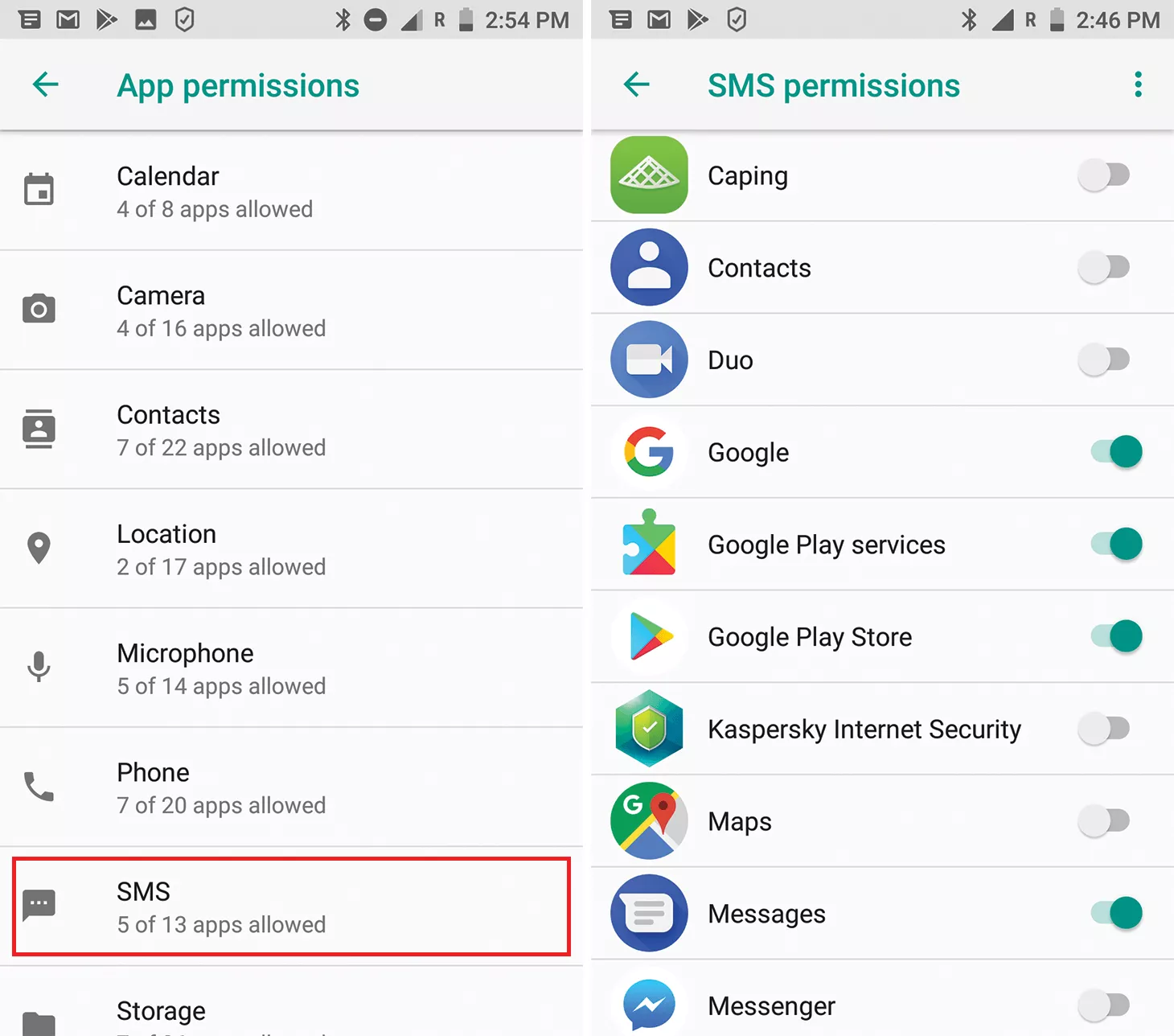How to Stop Pop-up Ads on an Android

Pop-up ads on Android can be annoying, to say the least. All of a sudden, they appear on your device’s screen, distracting you from your activities and often leading to glitches and device’s poor performance. Moreover, pop-ups often pose an actual threat to your cybersecurity. Many of them link to phishing websites, contain scammy links, and may even infect your Android device with malware.
Luckily, there is a solution to this issue. Read further to discover the most widespread types of intrusive ads, find out which ones are really dangerous, and learn how to stop pop-ups on Android for good.
Main types of pop-up ads on Android
First, let’s look at the most common types of pop-us you may face, define whether they are dangerous, and learn how to avoid them.
Intrusive ads
Despite being quite annoying, such pop-ups are the least harmful on this list. Most of them won’t compromise your cybersecurity (but might get on your nerves, still). So what are those ads, and should you stop them?
A pop-up ad is a widespread type of advertising that appears in a new window during browsing sessions. The latest surveys prove that this is one of the most hated aspects of Internet surfing. According to many recent surveys, over 80% of users dislike pop-ups. Unsurprisingly, 64% of people use ad blockers claiming that ads are annoying or intrusive. However, it is still quite a common tool marketers often apply in their campaigns. So if you keep receiving discount promotions, tempting deals, and “free gifts” on your Android device, see for yourself whether you want to get rid of them or not.
How to avoid intrusive pop-ups?
- Opt out of the most annoying advertisements in your browser settings
- Install ad-blocking software from Google Play
Malware
Malware is a malicious program or file that strives to infect your device with the goal of stealing your private data or even spying on your phone. There are some types of viruses specifically designed to strike Android devices. And such trojans often hide behind intrusive ads and pop-ups. Once you accidentally click on a link provided in an infected ad, the virus will secretly slip into your device. As a result, your personal information (such as credentials, bank account details, and such) could be sent to a third party without you knowing.
The data collected by Kaspersky shows that some of the most widespread mobile phone malware types in 2021-2022 were RiskTool, adware, trojan, trojan-banker, and trojan-spy.

How to avoid Android malware?
- Regularly update your device
- Stay away from suspicious links
- Use premium antivirus software and a VPN
Adware
Adware is malicious software that sends unwanted pop-up ads to your device. Most often, they are much harder to remove than common advertisements. Such programs are installed into your phone’s system, so simply opting out of advertising materials may not bring any results. The worst types of adware send intrusive pop-ups not only in your browser app, but directly to the home screen of your device (more on that in a bit).
Here is a malicious Android app spreading unwanted ads once you allow it to “run in background.”

How to avoid adware?
- Don’t click on suspicious pop-ups
- Regularly update your apps
- Install powerful antivirus software
- Download apps only from trustworthy stores
Ransomware
Ransomware is a specific type of malware that blocks users’ access to their device systems or personal files and requires a ransom to unblock those files. Usually, cyber criminals turn to impersonation to deceive users and convince them that a notification is sent by a legit organization or government institution. It also tries to look as convincing and urgent as possible to trick you into making a reckless decision.
Here is an example of ransomware attacking Android devices.

How to avoid ransomware?
- Never pay the ransom required by cybercriminals
- Report a ransomware scam to appropriate authorities
Scams
Except for ransomware, there are dozens of malicious techniques that use social engineering methods, such as impersonation, to trick users into revealing their private information or clicking on malicious links. And many Android pop-ups are not legit notifications, but scams. Most of them pretend to be sent by a company or organization you can trust and try to persuade users to click on suspicious links. Once you do, it will lead you to a phishing website striving to compromise your credentials, steal your ID, or infect your device with a virus.
In the example below, you can see an “urgent” notification that requires you to act immediately, telling you that your Android device has been “compromised.” But, in fact, it will be compromised only after you tap the “OK” button.

How to avoid Android pop-up scams?
- Never click on suspicious pop-up links
- Verify information mentioned in pop-ups
As you can see, malicious pop-ups are designed to trick users and are often difficult to distinguish from genuine messages. Let’s learn the difference between legit and harmful pop-ups.
How to spot a malicious Android pop-up
Here are the most significant red flags to watch out for.
- Too-good-to-be-true offers. A pop-up tells you that you’ve made a fortune, but you never bought a lottery ticket? Or maybe it claims that a relative from another country has left you a huge inheritance? Most likely, such promises are fakes striving to trick you into opening a malicious link.
- Impersonated companies and government organizations. If a message or pop-up says it was sent by a government body, PayPal, or Amazon, it’s not necessarily true. Do not trust suspicious notifications, and always check who’s the sender.
- Typos and grammatical errors. Reputable apps and legit marketers do not send ads with spelling mistakes, weird symbols, and low-quality images. If you’ve got such a notification, it is probably a scam attempt.
- Intrusiveness and inability to opt out. If a pop-up takes the entire screen of your Android device, and doesn’t want to disappear, or you cannot opt out, it was specifically designed that way. When you encounter a pop-up like that, it’s time to check your phone’s security.
- Suspicious links. Avoid clicking any links provided in pop-ups, as it’s one of the most common ways to lure you into a phishing trap.
If you’ve already received such pop-ups on your Android device, it’s important to get rid of them as soon as possible. Here is how you can remove annoying or fishy ads of this kind.
How to block unwanted pop-up ads on Android
In most cases, infected pop-ups and intrusive ads are sent either to your browser app or your device’s home screen. Let’s find out how to stop them.
How to stop pop-up ads on Android phone home screen
If you get unwanted pop-ups in your browser, such as Google Chrome, you can remove them by simply turning off pop-ups and ads in your browser app’s settings. Here is how to do it in several simple steps.
- Open the Chrome app
- Tap the three dots menu and select Settings
- Find the Site Settings option
- Tap Pop-ups and Redirects and disable them
- Return to the Site Settings section, tap Ads, and turn them off, too
And that’s it, no more intrusive pop-ups inside your browser. Note that for other browsers, like Edge, Firefox, and Opera, the steps to disable unwanted pop-ups and ads may slightly differ.
How to stop pop-up ads in Android browsers
If your home screen is attacked by annoying pop-ups even when you’re not running your browser, they are most likely sent by a third-party app. Sadly, there is no ultimate solution for blocking pop-ups on Android. So your goal is to detect which application spreads those notifications and turn to one of the following methods.
- Opt out of unwanted notifications. The best-case scenario is that a particular app is sending you pop-ups without malicious intent. So if you go to the app’s settings, you can turn pop-ups and notifications off. A legit app will stop sending you ads right away.

- You can also manage the notifications you receive on your Android device by managing App permissions. This function will help you allow or deny certain apps to send you notifications, track your location, access your calendar, camera, contacts, and more.

- Delete the spammy app. If the methods described above didn’t work and you keep getting tons of unwanted spam on your home screen, it’s probably time to get rid of a malicious application causing so much trouble. It’s a good idea to uninstall potentially dangerous apps while running Safe Mode on your device to prevent interruption.
Although you can get rid of dangerous Android pop-ups by taking the steps described above, it’s always better to safeguard yourself and prevent your device from receiving potentially dangerous notifications. Luckily, on Google Play, you can find some apps to block ads on Android devices.
Some prefer ad blockers, such as AdAway, AdBlock Plus, and AdGuard. They are relatively effective against different types of annoying ads and notifications attacking your phone.
Another excellent tool to fight against Android pop-ups is a VPN (virtual private network). Let’s explore how it can help you in more detail.
How to prevent pop-ups on Android with a VPN
A VPN is a powerful tool that doesn’t only hide your IP to conceal your online identity, but also protects you from viruses and other threats, such as man-in-the-middle (MITM) attacks, distributed denial-of-service (DDoS) attacks, online scams, and phishing attempts. But how? Let’s see what exactly a VPN does to protect your Android device from malicious pop-ups and other online dangers.
- A VPN secures your data. The Internet is full of various risks hiding where you don’t expect to face them. So it’s better to take an extra security measure and install a premium VPN app on your Android device. It will encrypt your data while running it through a remote tunnel. As a result, your private information will become invisible to the prying eyes of hackers, snoopers, and sniffers.
- A VPN prevents third-party monitoring. As mentioned above, malicious pop-ups are sent to your device to make you click on an infected link that leads to a shady website or installs malware to track your phone. And here, a VPN can help, as well. Thanks to powerful online security features, it will instantly block intrusive ads, risky sites, monitoring tools, and pop-ups.
Avoid Android ads and pop-ups with VeePN
Want to take your Android device’s security to the next level and get rid of dangerous pop-ups? Try VeePN! It’s a credible VPN service that effectively blocks intrusive ads and malware-infected notifications with the help of the NetGuard feature. Besides, VeePN will carefully protect your private data thanks to top-tier AES-256 encryption. You can check out a dedicated VeePN app for Android devices, as well as other solutions for different operating systems.
Download VeePN today and say goodbye to harmful pop-ups attacking your phone.
FAQs
Why are ads popping up on my phone?
Most likely, pop-up ads appear on your phone because of a third-party app you have installed. Many apps make money by sending customers tons of advertisements. However, while some of them are just annoying, others may compromise your device’s security, spread viruses, and allow hackers to steal your data. For more details, read this article.
How to remove a pop-up virus on Android?
If your Android device is constantly attacked by malicious pop-up ads, you can overcome this challenge by taking one of the following measures:
- Clear data and cache of potentially infected apps
- Detect which app is sending pop-ups and uninstall it
- Download a trustworthy antivirus tool on your phone
To prevent your phone from getting fishy notifications and pop-up ads, you can also download a powerful VPN, such as VeePN, on your device.
How do I permanently stop pop-up ads?
The solution depends on the type of pop-ups you’re receiving. If they come to your browser, like Google Chrome, you can stop pop-ups in your browser’s settings. But if they are delivered to your home screen, you will need to find out which app is sending you pop-ups and then either block pop-ups in the app’s settings or uninstall the app. You can also get rid of pop-ups with a powerful ad blocker tool combined with VPN software. For more information, read this article.
VeePN is freedom
Download VeePN Client for All Platforms
Enjoy a smooth VPN experience anywhere, anytime. No matter the device you have — phone or laptop, tablet or router — VeePN’s next-gen data protection and ultra-fast speeds will cover all of them.
Download for PC Download for Mac IOS and Android App
IOS and Android App
Want secure browsing while reading this?
See the difference for yourself - Try VeePN PRO for 3-days for $1, no risk, no pressure.
Start My $1 TrialThen VeePN PRO 1-year plan






